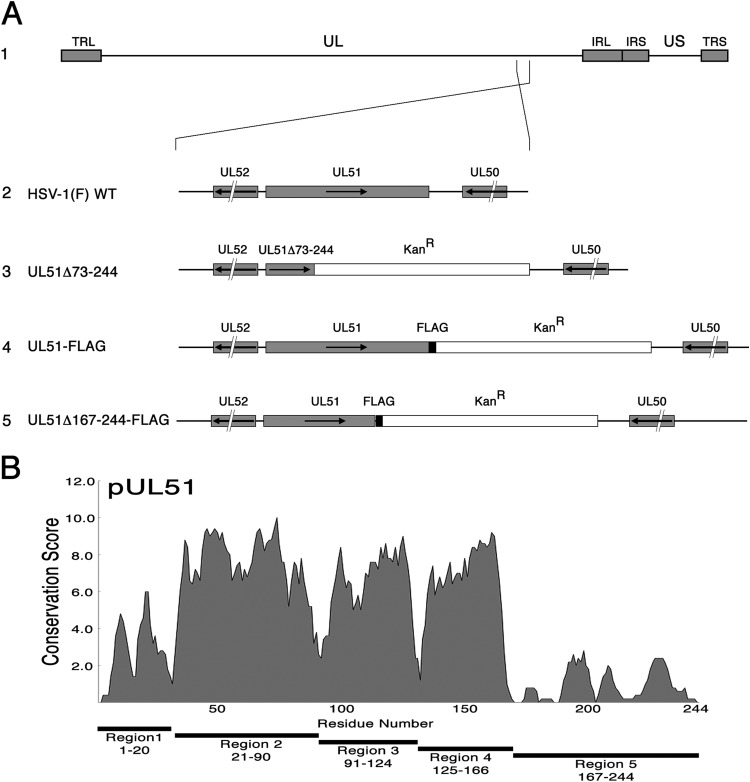FIG 1.
Construction of recombinant viruses. (A) Schematic diagram of the HSV-1(F) genome (line 1) and of the recombinant viruses used in this study. TRL, terminal repeat long region; UL, unique long region; IRL, internal repeat long region; IRS, internal repeat short region; US, unique short region; TRS, terminal repeat short region. Line 2, structures of the wild-type sequences in the regions of UL51 and US8; line 3, the UL51Δ73-244 virus carries a stop codon and a kanamycin resistance cassette in place of the sequences coding for amino acids 73 to 244 of pUL51; line 4, the UL51-FLAG virus carries a FLAG tag at the C terminus of UL51 followed by a kanamycin resistance cassette; line 5, the UL51Δ167-244FLAG virus was constructed as described in Materials and Methods and carries a FLAG-tagged truncated pUL51 that lacks approximately the last third of the protein. (B) UL51 sequence conservation. The plot shows the conservation of the biochemical properties of amino acids using all available herpesvirus pUL51 homologous sequences aligned using the program MUSCLE (87). Each residue position receives a conservation score, and scores were averaged over a sliding 5-amino-acid-residue window.

